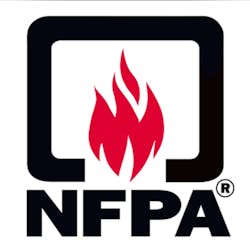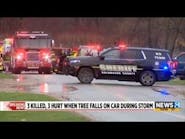NFPA Releases Infection Control Tip Sheet
Editor's note: Find Firehouse.com's complete coverage of the COVID-19 pandemic here.
April 2, 2020 – As emergency response personnel on the front lines are exposed to lethal pathogens or test positive for COVID-19, the National Fire Protection Association (NFPA) released a tip sheet that highlights information within NFPA 1581, Standard on Fire Department Infection Control Program and guidance from the Centers for Disease Control and Prevention (CDC). Written for fire departments, NFPA 1581 can be easily translated to fit EMT, paramedic, and law enforcement needs during this unprecedented time when personal protective equipment (PPE) supplies are scarce.
The new, timely resource breaks down responder infection control into five key areas.
Designate an Infection Control Officer - NFPA 1581 states that departments should have a part- or full-time employee serving as the infection control officer (ICO) managing all contamination aspects from guidance on personal protective equipment (PPE) to post-incident management and cleaning. Per the U.S. Department of Health and Human Services, hospitals and healthcare facilities must notify department ICOs any time members are exposed to a known COVID-19 positive patient.
Keep Yourself and Your Gear Clean - NFPA 1581 clearly identifies the following times to wash hands or use hand sanitizer (minimum of 60 percent alcohol), when hand washing is not available:
- After each emergency medical incident
- Immediately or as soon as possible after removal of gloves or other PPE
- After cleaning and disinfecting emergency medical equipment
- After cleaning PPE
- After any cleaning function
- After using the bathroom
- Before and after handling food or cooking and food utensils
Use Personal Protective Equipment. NFPA 1581 requires departments to keep infection-preventing PPE, such as gloves, eyewear, and masks, onboard all department vehicles that support EMS operations. For the COVID-19 virus, responders should be using droplet protection.
Limit Your Exposure. Limiting exposure can reduce the need for PPE and assist with long-term staffing availability. Some measures that can be taken to reduce exposure include, but are not limited to, the following:
- Provide emergency medical dispatch protocols that require dispatchers to request that when safe and able, the patient await responders outside in the open air.
- Limit the number of members who interact with patients.
- Once a member dons PPE, they should stay in the PPE for the remainder of patient care activities.
Expand Your Options in Times of Shortage. The CDC advises departments to either lower the protection levels of PPE being used for patient care and cleaning or reuse the PPE, after following disinfection procedures, if supply levels run low. Here are recommendations for departments to consider until adequate levels of PPE can be acquired:
- Instead of going down a level in respiratory protection, consider going up a level, such as with a powered air purifying respirator (PAPR) with the appropriate filter or cartridge.
- Work with your ICO, agency risk management, subject matter experts, and your medical director to develop protocols that allow for triaging the use of remaining higher-level PPE.
- Increase your buying power by leveraging contracts, mutual aid agreements, and memorandums of understanding.
For additional information on responder infection control, read this blog; and be sure to visit www.nfpa.org/coronavirus for responder safety, emergency planning, building, fire and life safety content.
For this release and other announcements about NFPA initiatives, research, and resources, please visit the NFPA press room.
As we navigate the evolving situation with COVID-19, we remain committed to supporting you with the resources you need to minimize risk and help prevent loss, injuries, and death from fire, electrical, and other hazards.
About the National Fire Protection Association (NFPA)
Founded in 1896, NFPA is a global self-funded nonprofit organization devoted to eliminating death, injury, property and economic loss due to fire, electrical and related hazards. The association delivers information and knowledge through more than 300 consensus codes and standards, research, training, education, outreach and advocacy; and by partnering with others who share an interest in furthering the NFPA mission. For more information, visit www.nfpa.org. All NFPA codes and standards can be viewed online for free at www.nfpa.org/freeaccess.






